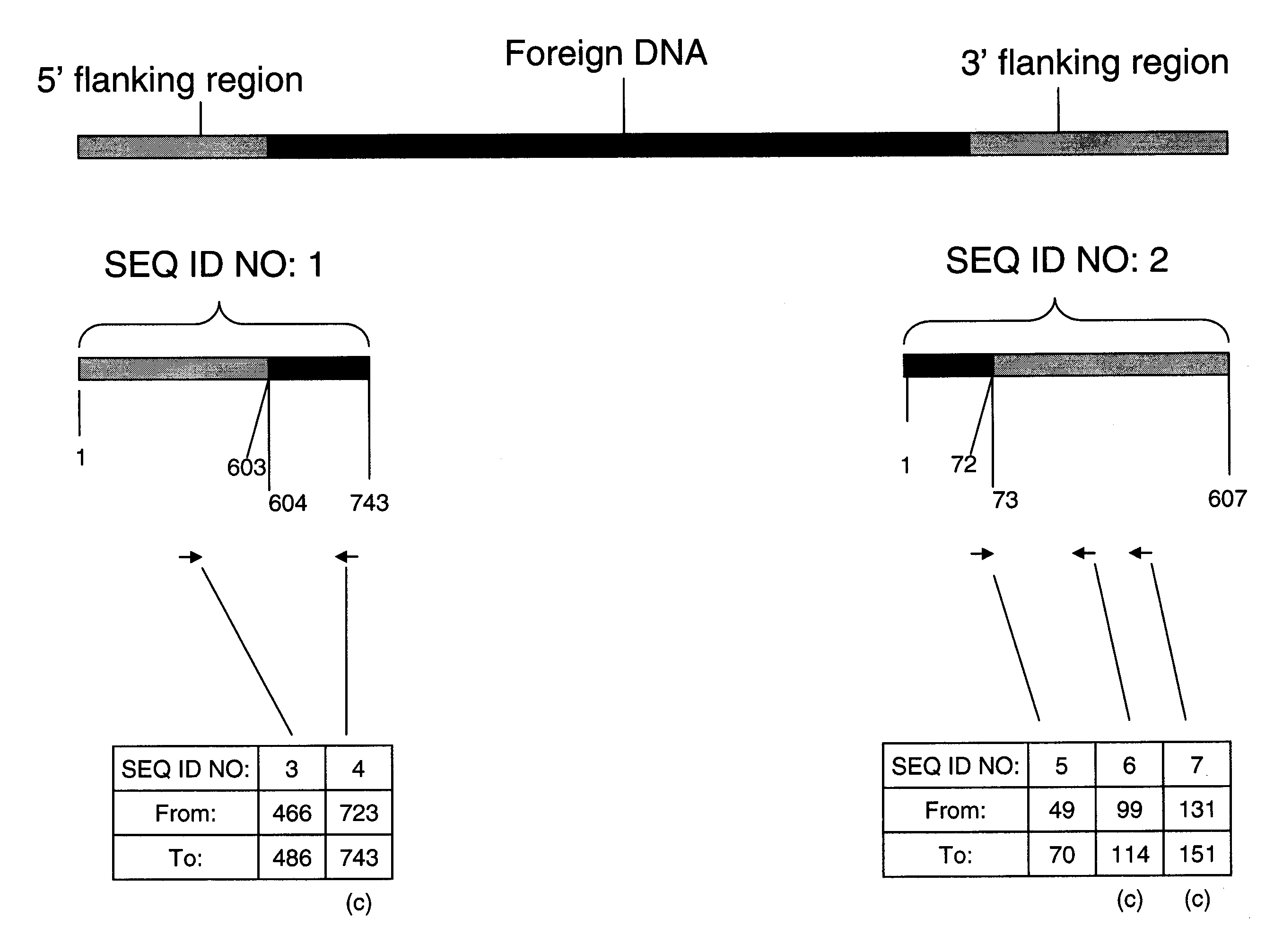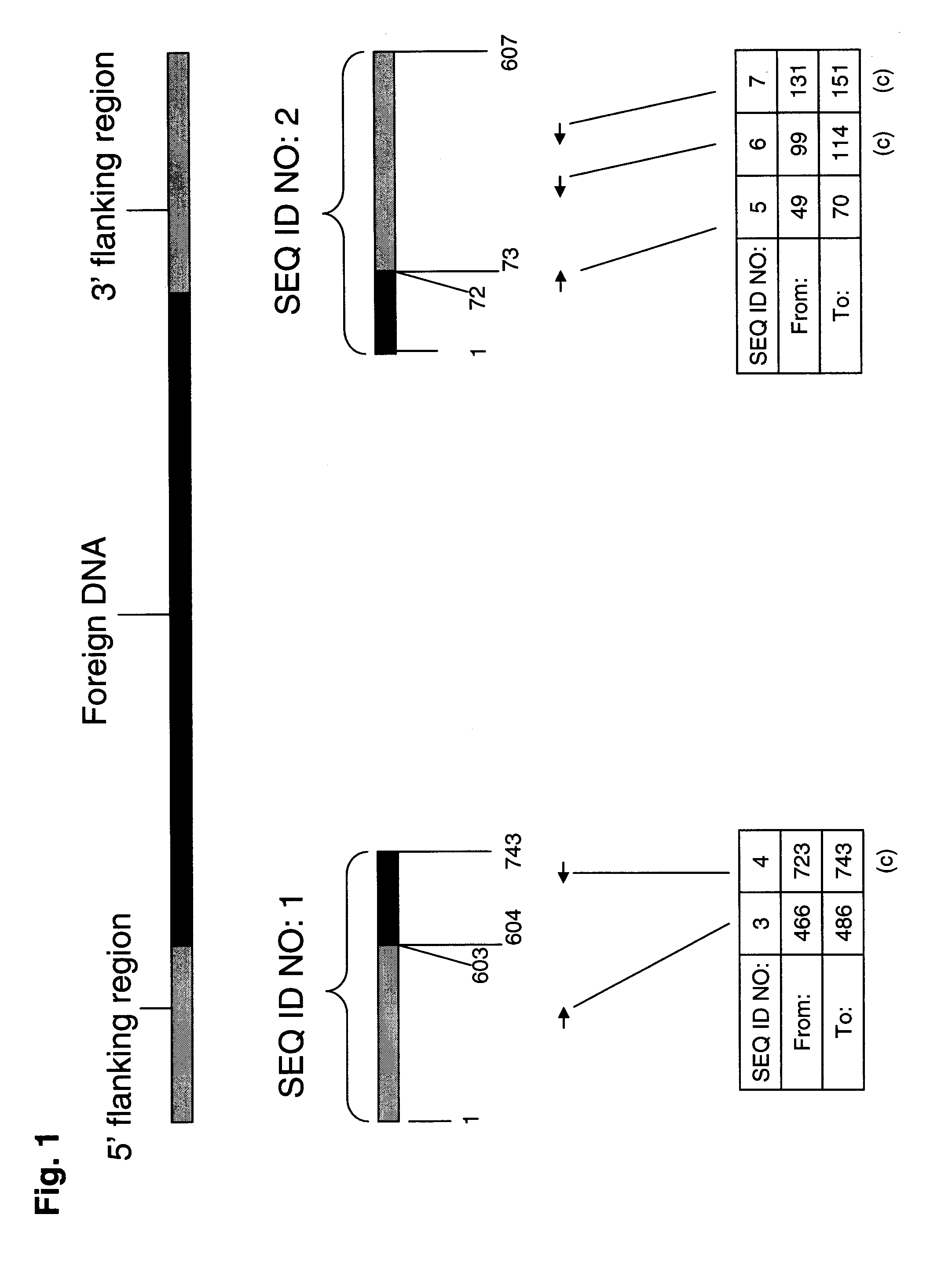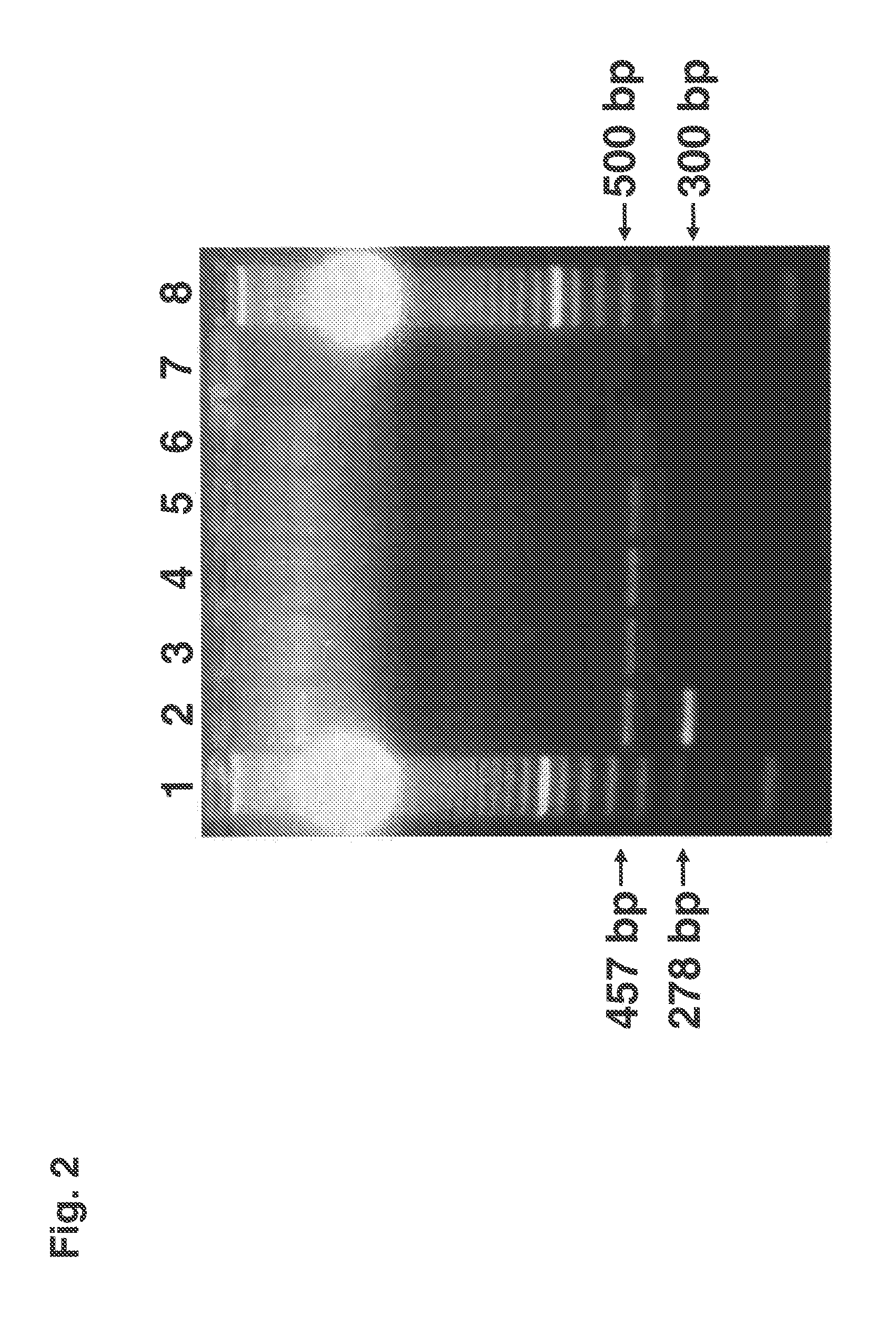Herbicide tolerant rice plants and methods for identifying same
a technology of herbicide-tolerant rice and rice, applied in biochemistry apparatus and processes, organic chemistry, sugar derivatives, etc., can solve the problems of common threat to rice production and crop economic unattractiveness, and achieve the effect of superior agronomic phenotyp
- Summary
- Abstract
- Description
- Claims
- Application Information
AI Technical Summary
Benefits of technology
Problems solved by technology
Method used
Image
Examples
example 1
Transformation of Rice
[0346]Rice tissue of the Cocodrie cultivar was transformed with a vector comprising the coding sequence of a modified bialaphos resistance gene (bar; Thompson et al., 1987, EMBO J. 6: 2519-2523) encoding the enzyme phosphinothricin acetyl transferase (PAT) under control of the 35S promoter from Cauliflower Mosaic Virus (Odell et al., 1985, Nature 313:810-812) using Agrobacterium-mediated transformation. Selection was done on phosphinothricin (PPT) at all stages except plantlet regeneration, which was done in the absence of PPT to accelerate growth. This resulted in a total of 233 primary transformants (plants of generation T0).
example 2
Development of Events
2.1. Development of Transgenic Homozygous Lines
[0347]The various T0 hemizygous plantlets were transitioned from tissue culture, transferred to greenhouse soil, and allowed to flower and set seed. Plantlets were evaluated for fertility, fecundity and tolerance to glufosinate ammonium. 185 events were selected for further analysis. T1 seed produced by selfing was collected from these plants.
[0348]T1 plants were grown in the field in Puerto Rico. T1 plants were sprayed with Liberty™ herbicide at 1800 grams active ingredient per hectare (g.a.i. / ha; recommended dosage for farmers is 500 g.a.i. / ha). Tolerant plants were evaluated for damage (which is defined by the criteria of leaf tip burn, mottling, stunting, yellowing or inability to recover from the herbicide application).
[0349]T2 seeds were harvested from panicles of 140, 504 and 54 tolerant plants of three selected events (named “1”, “2” and “4” hereinafter). The populations were sown in rows at the LSU Rice Res...
example 3
Characterization of Elite Event GAT-OS3
[0359]Once the GAT-OS3 event was identified as the event in which expression of the transgene as well as overall agronomic performance were optimal, the locus of the transgene was analyzed in detail on a molecular level.
3.1. Identification of the Flanking Regions of Elite Event GAT-OS3
3.1.1. 5′ Flanking Region
[0360]The sequence of the region 5′ flanking the foreign DNA in the GAT-OS3 elite event was determined using LIM TAIL-PCR. This protocol is a modification of the thermal asymmetric interlaced (TAL-) PCR method described by Liu et al. (1995, Plant J. 8(3): 457-463). Three nested primers, selected for annealing to the foreign DNA and based on their annealing conditions, were used in successive reactions together with primers annealing to linkers on BamHI restriction fragments of genomic DNA from rice plants containing elite event GAT-OS3. The tertiary PCR product was purified and sequenced.
[0361]The sequences of the linker and primers used w...
PUM
| Property | Measurement | Unit |
|---|---|---|
| Fraction | aaaaa | aaaaa |
| Purity | aaaaa | aaaaa |
Abstract
Description
Claims
Application Information
 Login to View More
Login to View More - R&D
- Intellectual Property
- Life Sciences
- Materials
- Tech Scout
- Unparalleled Data Quality
- Higher Quality Content
- 60% Fewer Hallucinations
Browse by: Latest US Patents, China's latest patents, Technical Efficacy Thesaurus, Application Domain, Technology Topic, Popular Technical Reports.
© 2025 PatSnap. All rights reserved.Legal|Privacy policy|Modern Slavery Act Transparency Statement|Sitemap|About US| Contact US: help@patsnap.com



